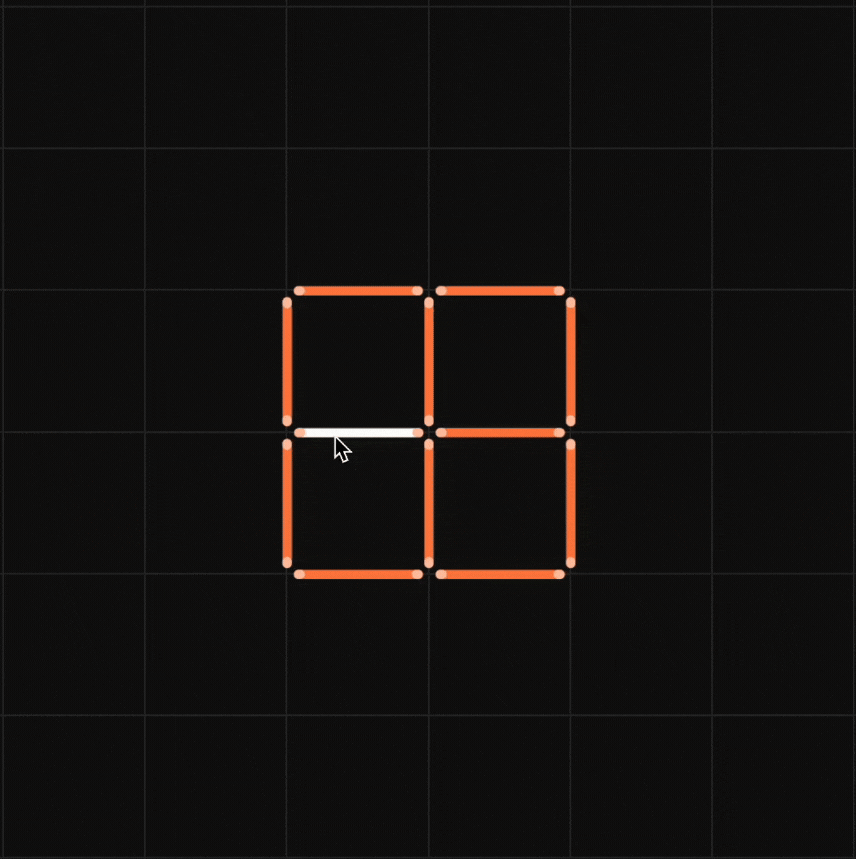

In right triangle ABC, right angled at C, M is the mid-point of hypotenuse AB. C is joined to M and produced to a point D such that DM = CM. Point D is joined to point B (see Fig. 7.23). Show that:
i) ΔAMC ≅ ΔBMD
ii) ∠DBC is a right angle.
iii) ΔDBC ≅ ΔACB
iv) CM = 1/2 AB

Solution:
Given: M is the mid-point of hypotenuse AB, ∠C = 90° and DM = CM
To Prove:
i) ΔAMC ≅ ΔBMD
ii) ∠DBC is a right angle.
iii) ΔDBC ≅ ΔACB
iv) CM = 1/2 AB

i) In ΔAMC and ΔBMD,
AM = BM (M is the mid - point of AB)
∠AMC = ∠BMD (Vertically opposite angles)
CM = DM (Given)
∴ ΔAMC ≅ ΔBMD (By SAS congruence rule)
∴ AC = BD (By CPCT)
Also, ∠ACM = ∠BDM (By CPCT)
ii) ∠DBC is a right angle.
We know that, ∠ACM = ∠BDM (proved above)
But, ∠ACM and ∠BDM are alternate interior angles. Since alternate angles are equal, it can be said that DB || AC.
∠DBC + ∠ACB = 180° (Co-interior angles)
∠DBC + 90° = 180° [Since, ΔACB is a right angled triangle]
∴ ∠DBC = 90°
Thus, ∠DBC is a right angle.
iii) In ΔDBC and ΔACB,
DB = AC (Already proved)
∠DBC = ∠ACB = 90° (Proved above)
BC = CB(Common)
∴ Δ DBC ≅ Δ ACB (SAS congruence rule)
iv) CM = 1/2 AB
Since Δ DBC ≅ Δ ACB
AB = DC (By CPCT)
⇒ 1/2 AB = 1/2 DC
It is given that M is the midpoint of DC and AB.
CM = 1/2 DC = 1/2 AB
∴ CM = 1/2 AB
☛ Check: NCERT Solutions Class 9 Maths Chapter 7
Video Solution:
In right triangle ABC, right angled at C, M is the mid-point of hypotenuse AB. C is joined to M and produced to a point D such that DM = CM. Point D is joined to point B (see Fig. 7.23). Show that:
i) ΔAMC ≅ ΔBMD
ii) ∠DBC is a right angle.
iii) ΔDBC ≅ ΔACB
iv) CM = 1/2 AB
NCERT Maths Solutions Class 9 Chapter 7 Exercise 7.1 Question 8
Summary:
If in right triangle ABC, right-angled at C, M is the mid-point of hypotenuse AB, C is joined to M and produced to a point D such that DM = CM and if point D is joined to point B, then it is proved that ΔAMC ≅ ΔBMD using SAS congruence, ∠DBC is a right angle, ΔDBC ≅ ΔACB using SAS congruence, and CM = 1/2AB.
☛ Related Questions:
- l and m are two parallel lines intersected by another pair of parallel lines p and q. Show that ΔABC ≅ ΔCDA.
- Line l is the bisector of an angle ∠A and B is any point on l. BP and BQ are perpendiculars from B to the arms of ∠A (see the given figure). Show that:i) ΔAPB ≅ ΔAQBii) BP = BQ or B is equidistant from the arms of ∠A
- In the given figure, AC = AE, AB = AD and ∠BAD = ∠EAC. Show that BC = DE.
- AB is a line segment and P is its mid-point. D and E are points on the same side of AB such that Show that ∠BAD = ∠ABE and ∠EPA = ∠DPB (See the given figure). i) ΔDAP ≅ ΔEBP ii) AD = BE
visual curriculum